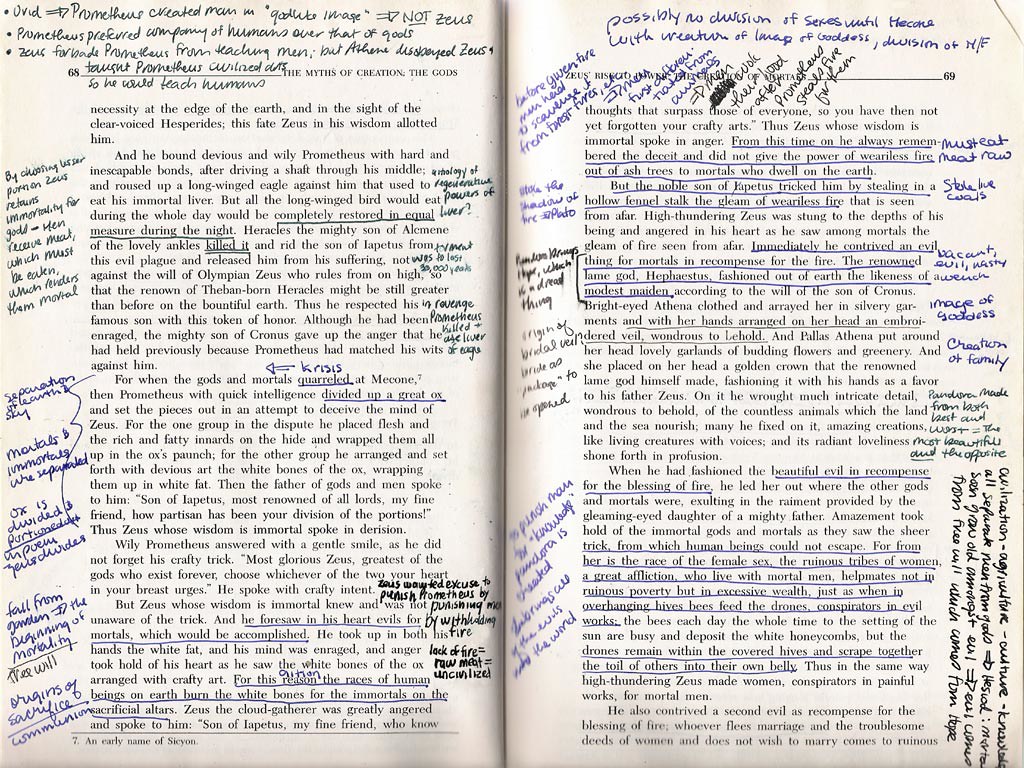Last week I stumbled across the book Annotation, written by Remi Kalir and Antero Garcia. As the title suggests, the book is all about the history and practices of annotating texts. And probably because the book is from the MIT Press, the authors don’t stop at books and papers – they also tackle how digital technologies offer new possibilities for annotation. They consider how annotation might be used in the interests of open scholarship and open government.
Kalir and Garcia see annotation as one way that readers respond to texts. Not the only way of course, as copious memo-makers can attest. They say “Annotation is a way that readers talk with their texts, to their texts, about and beyond texts and within and through and through texts” (p. xii). The authors offer a generous take on annotation – seeing it ranging from underlining, and redacting to making extended commentary in the margins. Annotation “binds reading and writing together”, they say.
Annotation is a particular genre, according to Kalir and Garcia, a “synthesis of reading, thinking writing and communicating” (p. xiv). It is about the reader making meaning of and with the text. “Annotation connects together people, texts and ideas, enabling shared insights, engaged dialogue, and new understandings and knowledge”, they suggest. (p. xii) As a genre, annotation serves five purposes – “providing information, sharing commentary, sparking conversation, expressing power and aiding learning” (p. xiv) All of these are of course of interest to people engaged scholarly activities.
Kalir and Garcia see academic work as continually engaged with annotation. They take up the notion of academic work as a Great Conversation. Kalir and Garcia explain the Great Conversation this way – “Scholars have participated in an ongoing an iterative process whereby an author references another colleague, ideas are built on prior insights, and intellectual inquiry refines the cumulative progress of learned societies” (p. 100). This explanation of scholarly practice as conversation obviously underpins my positive response to the book – I am always banging on about writing as being in conversation with other scholars. And on focusing on exchange and contribution rather than deficit and gap-talk.
According to Kalir and Garcia, annotation is an inextricable part of ongoing scholarly dialogue. “ As this Great Conversation continues it propels forward an ever -expansive network of annotation – including endnotes, interlinear glosses, in-line citations, and recent advances like hyperlinked texts and open data sets – that provides intellectual lineage to substantive claims relevant to skeptics and stalwart researchers” (p. 100). Yes, absolutely.
As you can probably guess, Kalir and Garcia are not judgy about people who write on their books. This is not necessarily everyone’s view. I’ve seen lots of scolding social media about the horrrors of writing on the pristine page. But K and G do present a persuasive argument about why writing on and in your books is good practice – and they point to lots of historical examples. They see book-marking as the reader engaging productively with the writer’s ideas. As we read we make a mark to, for example, signal important information or to ask questions about what is written or to add information or to challenge an interpretation. Rather than defacing the book these are, K and G say, signs of engagement. (Of course if this is a library book, then annotating a text might be problematic. But if it is your own book, then annotating is a way to make sense as you read.)
Kalir and Garcia are also fans of footnotes and endnotes. As am I. Some scholarly publishers try to dissuade their authors from using footnotes and endnotes. I am not sure why. It is as if these publishers think that authors must make their main text cover everything. It’s neater. Perhaps they think it is easier for readers. But footnotes and endnotes can add nuance and supporting information and/or refer out to other discussions which make the text richer. And you don’t have to read the footnotes and endnotes if you don’t want to! Of course, I was partly trained as an historian and am well disposed to footnotes. I don’t see it as problematic to spend time away from the main text.
This book won’t be everyone’s cup of tea. If you are looking for something that offers practical, tips on note-taking and annotating, then this book is not for you. There are no immediate handy hints. The authors don’t cover how to annotate. They do however offer leads to follow up – they point to software that supports annotation and projects where the software has been put to use. I’m going to chase some of these up.
And Kalir and Garcia do discuss social annotation – when people annotate together – and how this can be part of a pedagogical process. They give examples where groups have used annotation to support close reading of a text. They also address questions of power and knowledge – who has the capacity to annotate, when and where – and thus speak to current discussions about whose knowledges count in scholarship. And, very importantly, Kalir and Garcia point to the possibilities for annotation becoming part of a more democratic and open information infrastructure. If you are interested in open scholarship but don’t know where and how to start, this book might be one place to get into the topic (and conversation).
And in case you were wondering, yes, the authors did make their draft text open and they invited annotations, some of which are in the book. And you can talk with them, and other people interested in annotation, on twitter on #AnnoConvo.
Photo credit; Shelley CC BY-NC-ND 2.0











Great post Pat. I used to annotate in books for a very long time, and took a hiatus but have since returned. I agree with the authors, for me it is like a conversation, and also a way to mark the terrain as I read.
LikeLiked by 1 person